In our previous blog post we had discussed about What is Scoping Rules in Salesforce. In these blog post we discuss about What is Validation Rules in Salesforce
Contents
- 1 What is Validation Rules in Salesforce
- 1.1 Introduction to Validation Rules:-
- 1.2 Definition of Validation Rules:-
- 1.3 Importance of Validation Rules:-
- 1.4 How Validation Rules Work in Salesforce:-
- 1.5 Creating and Configuring Validation Rules:-
- 1.6 Difference Between Validation Rules and Other Data Integrity Measures:-
- 1.7 Deactivating Unused or Redundant Rules:-
- 1.8 Summary of Key Points:-
- 1.9 Frequently Asked Questions:-
What is Validation Rules in Salesforce
Introduction to Validation Rules:-
Validation rules are an essential aspect of maintaining accurate data within Salesforce. They serve as checkpoints that enforce specific criteria before allowing data to be saved to the system. Understanding validation rules is crucial for organizations looking to enhance data accuracy and operational efficiency in their Salesforce environment.
Definition of Validation Rules:-
What Are Validation Rules?
Validation rules are automated checks in Salesforce that ensure the data entered into the system meets predefined criteria. They prevent users from inputting erroneous or inconsistent data, ultimately maintaining the integrity of the database.
Examples of validation rules:-
Validation rules in Salesforce are essential for maintaining data accuracy and consistency by verifying that the data entered meets specific criteria before it is saved. Here are clear explanations of some examples of validation rules:
- AND: Combines multiple conditions where all must be true for the overall expression to be true.
- OR: Combines multiple conditions where at least one must be true for the overall expression to be true.
- ISBLANK: Checks if a field or expression has a value.
- NOT: Reverses the logical value of its argument, returning true if the argument is false and false if the argument is true
-
Account Number Is Numeric Validation Rule:
- Description: Validates that the Account Number is numeric if not blank.
- Formula: OR( ISBLANK(Account Number), NOT(ISNUMBER(Account Number)) )
- Error Message: Account Number Error
- Error Location: Account Number Field
-
Account Number Length Validation Rule:
- Description: Validates that the Account Number is exactly seven digits if not blank.
- Formula: AND( ISBLANK(Account Number), LEN(Account Number) <> 7 )
- Error Message: Account Number Length Error
- Error Location :Account Number Field
-
Billing Zip/Postal Code Format Validation Rule:
- Description: Validates that the Billing Zip/Postal Code is in 99999 or 99999-9999 format if Billing Country is USA or US.
- Formula: AND( OR(Billing Country =”USA”, Billing Country = “US”), NOT(REGEX(Billing Postal Code, “\d{5}(-\d{4})?”)) )
- Error Message: ZIP code must be in 99999 or 99999-9999 format
- Error Location: Billing Zip/Postal Code Field
These examples showcase how validation rules in Salesforce can be tailored to ensure data integrity and adherence to specific business requirements, ultimately enhancing the quality of data within the Salesforce platform.
Importance of Validation Rules:-
Validation rules play a vital role in ensuring data accuracy. By enforcing specific conditions, organizations can minimize errors, improve reporting, and streamline business processes. They act as a safety net, catching mistakes before they compromise the integrity of the data.
How Validation Rules Work in Salesforce:-
In Salesforce, validation rules are configured using a combination of criteria, expressions, and error messages. When a user attempts to save a record that violates the defined criteria, an error message is displayed, prompting them to correct the issue before proceeding.
Creating and Configuring Validation Rules:-
Steps to Create Validation Rules:-
To create a validation rule in Salesforce, follow these steps:
- Navigate to Setup: Click on the Setup icon (Gear) and choose Setup.
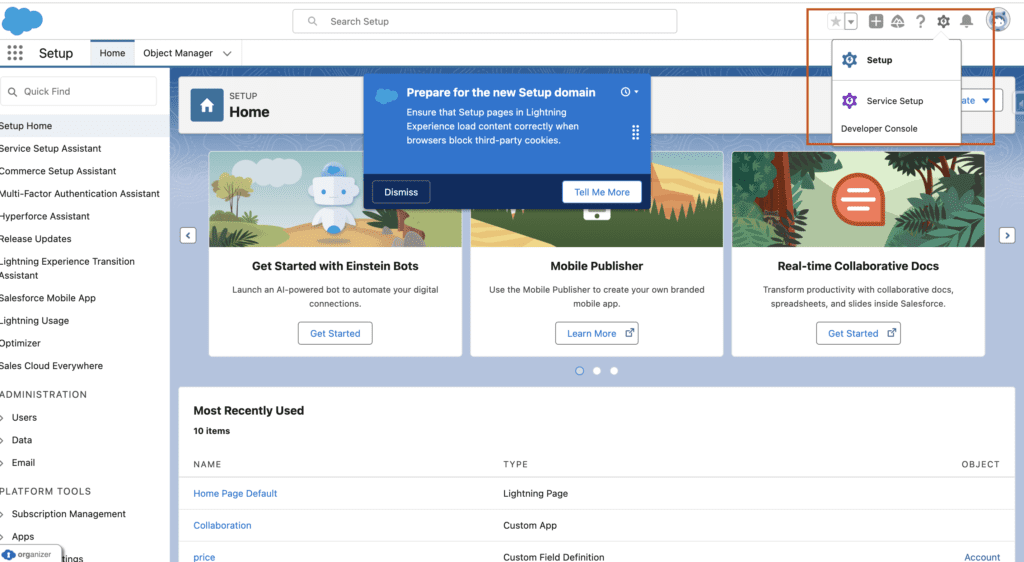
- Access Object Manager: Click on Object Manager and select the object you want to add the validation rule to, such as Account.
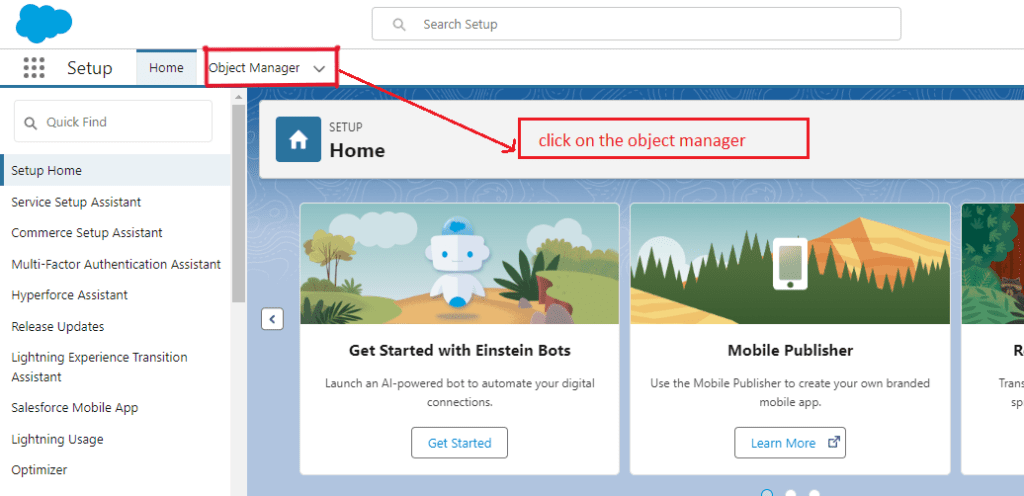
- Choose Validation Rules: From the menu on the left, select Validation Rules.
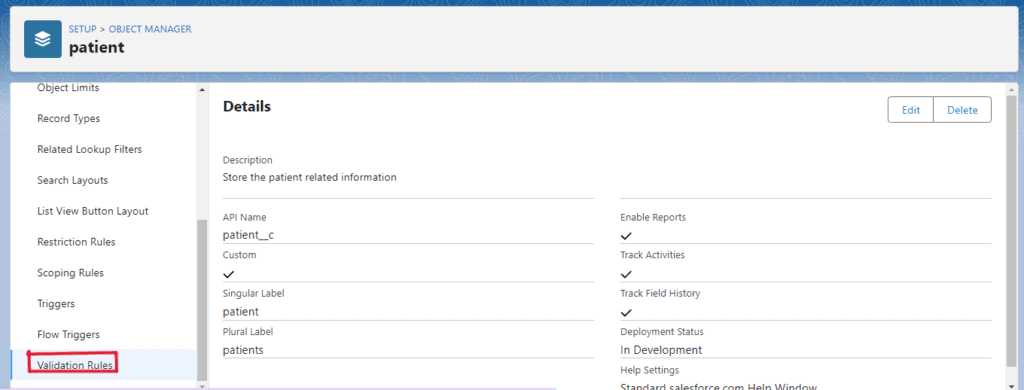
- Create a New Rule: Click the New button in the top right of the screen.

- Define Rule Details: Give the rule a Name and Description. Check the Active box if you want to activate the rule immediately.
- Set Rule Criteria: Create the true/false condition for the rule. For example, you can set criteria like “Accounts cannot have a value in the Discount field over 30%.”
- Check Syntax: Click the Check Syntax button to verify that your criterion is correct.
- Enter Error Message: Scroll down the page and enter the text of the error message you want to display when the rule criteria evaluates to false.
- Save the Rule: Click the Save button to save the validation rule.
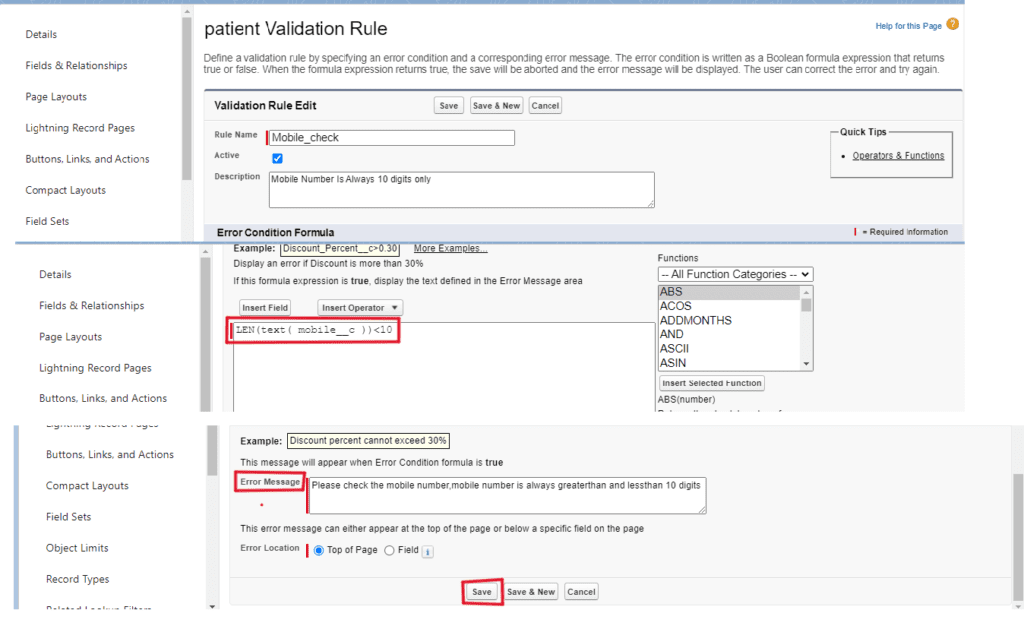
- Test the Rule: Test the new rule on your organization’s data to ensure it functions correctly for both true and false rule evaluations.
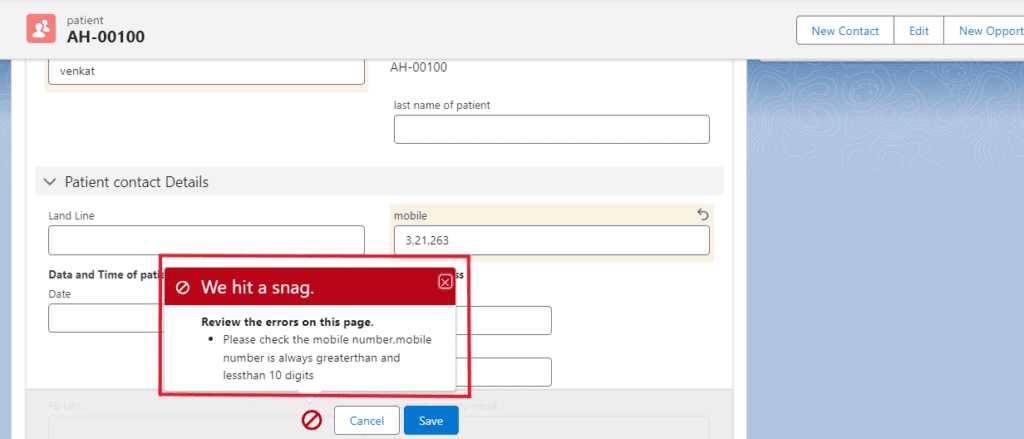
By following these steps, you can successfully create a validation rule in Salesforce to enforce data quality standards and ensure data integrity within your organization.
You want know more about this topic is What is Validation Rules in Salesforce click here
Difference Between Validation Rules and Other Data Integrity Measures:-
Validation Rules vs. Triggers:-
Validation rules and triggers serve distinct purposes in Salesforce. While validation rules focus on checking data at the point of entry, triggers are used to perform complex operations or updates based on specific conditions. Triggers are typically used for more advanced automation.
Validation Rules vs. Workflow Rules:-
Workflow rules are used to automate standard internal procedures in Salesforce, such as sending email alerts or updating fields. Unlike validation rules, workflow rules do not prevent the saving of records based on specific criteria but instead trigger actions based on predefined conditions.
Validation Rules vs. Apex Code:-
Apex code allows for the creation of custom business logic and automation in Salesforce. While validation rules offer a point-and-click solution for data validation, Apex code provides more flexibility and control over complex business processes.
Testing Validation Rules Before Activation:-
Before activating validation rules in a live environment, test them thoroughly in a sandbox or test environment. This helps identify any unintended consequences or errors in the rule logic before impacting actual data.
Editing Criteria and Error Messages:-
Update the criteria and error messages of validation rules as needed to reflect changes in business requirements or data validation criteria. Ensure that error messages remain clear and concise to guide users effectively.
Deactivating Unused or Redundant Rules:-
Understanding When to Deactivate:-
Evaluate validation rules periodically to identify any that are no longer necessary or redundant due to changes in business processes. Deactivating unused rules can help streamline data entry and reduce user confusion.
Steps to Safely Deactivate Rules:-
Before deactivating a validation rule, ensure that there are no dependencies or unintended consequences associated with the rule. Communicate changes to users, provide training if needed, and monitor the impact on data quality.
Impact on Existing Data and Processes:-
Consider the implications of deactivating validation rules on existing data and processes. Test thoroughly to ensure that disabling a rule does not compromise data integrity or lead to unexpected errors in the system.
Summary of Key Points:-
- Validation rules are essential checkpoints in Salesforce that enforce specific data criteria.
- Implementing validation rules improves data accuracy, reporting quality, and operational efficiency.
- Organizations can create, manage, and update validation rules to adapt to changing business needs effectively.
Frequently Asked Questions:-
- What happens if a validation rule condition is met?
If a validation rule condition is met in Salesforce, the associated action is executed, such as displaying an error message or preventing the record from being saved. This ensures data quality and integrity by enforcing predefined criteria before allowing data to be processed within the platform.
- Can validation rules be bypassed by certain users?
Yes, validation rules in Salesforce can be bypassed by certain users. By creating custom permissions and assigning them to specific users or profiles, administrators can allow those users to override validation rules when necessary, providing flexibility while maintaining data integrity
- How can I test validation rules without affecting live data?
To test validation rules in Salesforce without impacting live data, utilize the Salesforce Sandbox environment. Create a copy of your production data in a Sandbox, apply and test the validation rules there. This allows for thorough testing without affecting actual live data or processes, ensuring a smooth deployment.
By understanding and effectively implementing validation rules in Salesforce, organizations can significantly enhance data accuracy and overall operational efficiency.
In our next blog post we will discuss about What is Salesforce Data Management

3 thoughts on “What is Validation Rules in Salesforce”